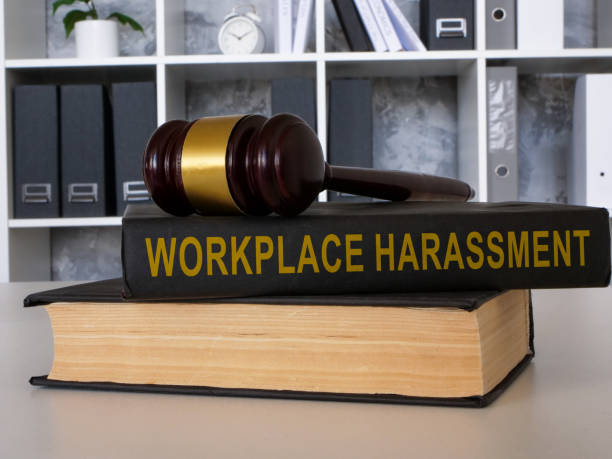
Sexual harassment in the workplace has been a critical issue for decades, but recent regulatory developments have placed an even stronger emphasis on preventing it. With the introduction of new laws and regulations across various jurisdictions, employers are now obligated to take proactive measures to prevent sexual harassment rather than merely addressing complaints after the fact. These new duties signify a shift from reactive to preventative action, and companies must adjust their workplace policies to comply effectively. Here, we outline the key steps employers must take to ensure they fulfill this new duty and create a safer, more respectful workplace.
1. Understand the Legal Requirements
The first step in complying with the new duty to prevent sexual harassment is to understand the specific legal requirements in your jurisdiction. In countries like the UK, the Employment Tribunal can hold employers accountable for failing to prevent harassment. Laws such as the Equality Act 2010 (and its amendments) establish that employers must take all reasonable steps to prevent harassment in the workplace. The penalties for non-compliance can include hefty fines, public sanctions, and reputational damage.
Similarly, in the United States, the Equal Employment Opportunity Commission (EEOC) provides guidelines on preventing workplace harassment under Title VII of the Civil Rights Act of 1964. Employers should regularly consult legal experts or HR professionals to stay updated on any changes in local, state, and federal laws that govern workplace harassment.
2. Develop and Implement a Comprehensive Anti-Harassment Policy
One of the most crucial steps for employers is to create a robust anti-harassment policy that clearly defines what constitutes sexual harassment, outlines reporting mechanisms, and states the consequences of violating the policy. This policy should be:
- Easily accessible: Employees at all levels should have easy access to the policy, whether it’s posted on the company intranet or included in employee handbooks.
- Inclusive and clear: The language used in the policy should be clear, inclusive, and free from legal jargon so that all employees can understand it.
- Regularly updated: As regulations and workplace dynamics evolve, the anti-harassment policy must be reviewed and updated periodically to reflect these changes.
3. Provide Regular Training for Employees and Management
Training is key to fostering a workplace culture that understands and actively prevents sexual harassment. Employers should provide:
- Annual or biannual training: Regular sessions ensure that employees are continually educated about what constitutes harassment, the reporting process, and how to intervene if they witness inappropriate behavior.
- Management-specific training: Supervisors and managers should receive additional training that equips them to handle complaints, address situations appropriately, and foster a respectful work environment.
- Interactive sessions: Rather than merely handing out training materials, employers should engage employees in interactive sessions that allow for questions, case studies, and role-playing. This increases engagement and retention of the material.
4. Create Multiple Reporting Channels
Employees must feel comfortable reporting incidents of harassment, and a single reporting method may not be sufficient. Employers should provide:
- Anonymous options: Some employees may fear retaliation or embarrassment when reporting harassment. Offering an anonymous reporting channel, such as a confidential hotline, ensures that all employees can report issues without fear.
- Multiple avenues for complaints: In addition to HR, employees should be able to report incidents to their direct supervisors, external consultants, or an independent third-party service. This increases the likelihood that issues will be reported and resolved swiftly.
5. Take Immediate and Appropriate Action
When harassment complaints arise, employers must act quickly and appropriately to resolve them. The steps include:
- Immediate investigation: Upon receiving a complaint, employers must initiate an investigation promptly. Delaying this process can create the impression that harassment is not taken seriously and may worsen the situation.
- Confidentiality: Maintain confidentiality to protect both the complainant and the accused. Information should be shared only with those who need to know, such as HR personnel and investigators.
- Fair and unbiased process: Ensure that the investigation is thorough and impartial. The goal is not only to address the complaint but also to protect the rights of all parties involved.
- Enforce consequences: If harassment is confirmed, employers must take decisive action, which may include disciplinary measures, termination, or legal consequences.
6. Monitor the Workplace Environment
Preventing sexual harassment is not a one-time effort; employers must continuously monitor the workplace environment to ensure that it remains free of harassment. This can be done through:
- Surveys and feedback mechanisms: Conduct anonymous employee surveys to assess workplace culture and identify any potential issues.
- Regular audits: Periodically audit the implementation and effectiveness of the anti-harassment policies and training programs to ensure compliance and identify areas for improvement.
7. Foster a Culture of Respect
Finally, employers must focus on fostering a culture of respect, where employees feel valued and safe. This culture starts at the top, with leaders and managers setting a positive example of respectful behavior. Encourage open communication, promote diversity and inclusion, and make it clear that harassment of any kind will not be tolerated.
Conclusion
The new duty to prevent sexual harassment requires employers to shift their focus from reactive to proactive strategies. By developing comprehensive policies, providing training, creating multiple reporting channels, taking immediate action, and fostering a respectful culture, employers can not only comply with the law but also create a workplace where everyone feels safe, respected, and valued. Prevention is always better than cure, and in the case of sexual harassment, this has never been more true.







